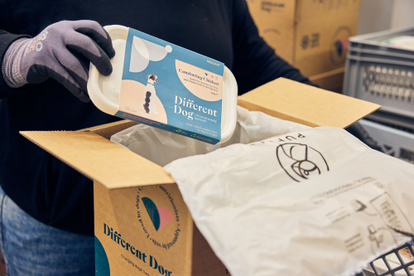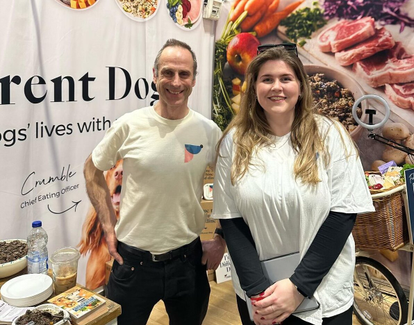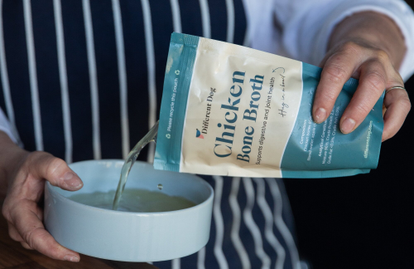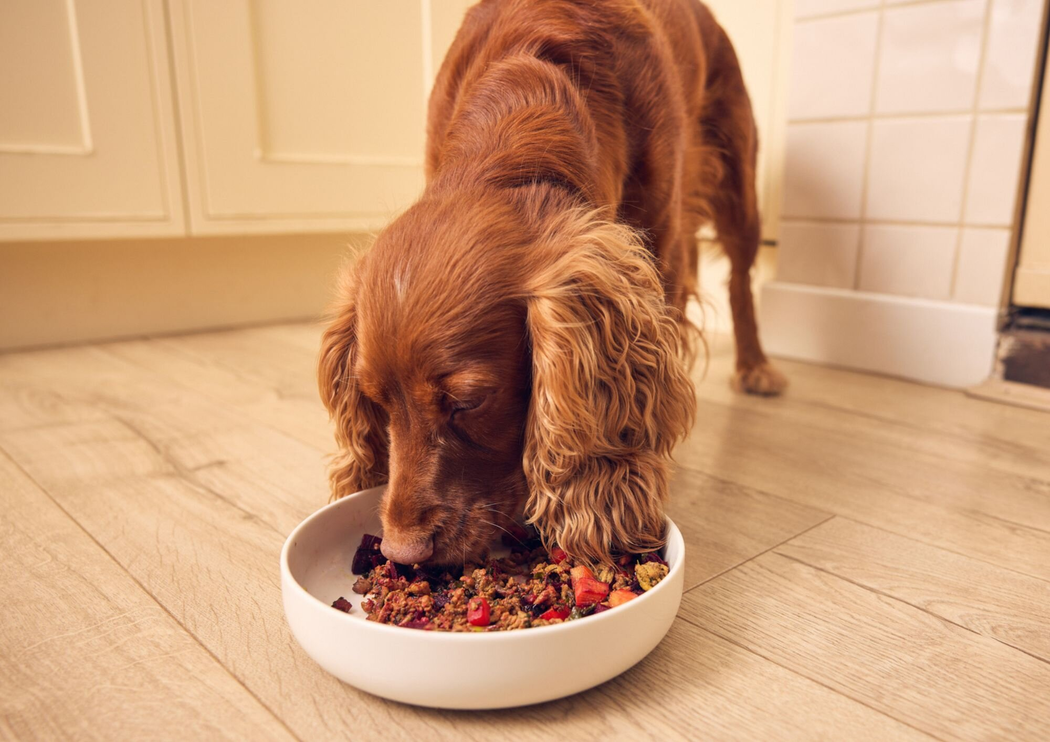

Transitioning your dog to a new diet should always be done gradually. Find out the best way to change dog foods and how to manage fussy eaters.
Welcome to the pack
Welcome to the Different Dog pack; thank you so much for choosing our freshly cooked meals for your favourite four-legged friend. While our chefs get cooking your dog’s soon-to-be favourite recipes, here’s a few pointers on how best to navigate the transition period.
Why it’s important to transition your dog to a new diet gradually
It’s important to transition your dog to any new diet gradually to help their microbiome (that’s the good bacteria that lives in their gut) to steadily adapt to ingredients and textures. It can feel tempting to switch your dog to a new food quickly to give them the benefits as soon as possible, but spending a little time and patience doing the transition slowly will benefit your dog in the long run.
By adding a small amount of their new food in with their current diet and building up slowly, our dogs are less likely to experience tummy upsets or loose stools.
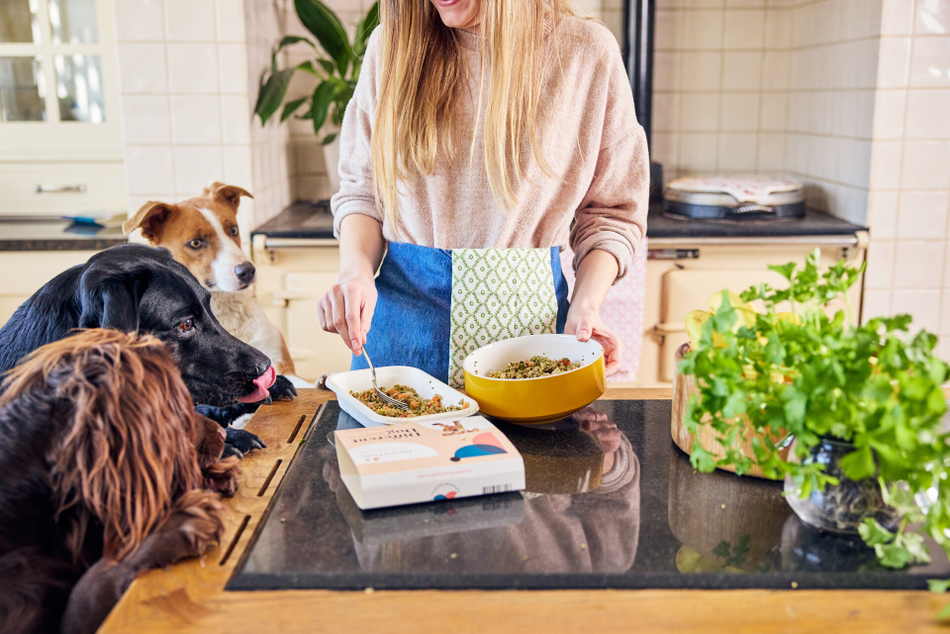
How we recommend transitioning your dog to a new diet
For most dogs, the transition is very straightforward. We recommend taking between seven and ten days to fully transition your dog to their new Different Dog recipes.
When your delivery arrives, unpack all of your recipes except one into the freezer, then put the remaining pot into the fridge to defrost, which can take 12-24 hours depending on the size of your pot.
Once the recipe is fully defrosted start by adding 10% of Different Dog alongside 90% of their current food to their bowl and feed them at their normal time. If there are no issues, build the amount of Different Dog up by approximately 10% and reduce their existing food by 10% every day over the next week to 10 days until they are eating their full quota of Different Dog.
Our team are on hand to support you before, during and after your transition period so please do not hesitate to contact us at feedme@differentdog.com if you need any help at all.
How should I transition my dog to a new diet if they have a sensitive stomach?
If your dog has ongoing health issues or a sensitive stomach, we recommend starting with just one or two protein sources at a time. Our in-house nutritionist, Bianca, and vet, Alison, can chat through your dog’s medical history and help you find the best recipes.
It can take slightly longer to transition dogs who have health conditions, sensitive stomachs or need extra support, as their digestive system might take a little longer than usual to adjust. Alison and Bianca can also help you create a transition plan to ensure both of you are happy and comfortable throughout this period.
It can also be very beneficial to add a probiotic, which provides good bacteria to support gut microbiome health, throughout the transition process. You can add Animotics probiotics to your box.
Drop us an email at feedme@differentdog.com to arrange a consultation with Alison or Bianca.
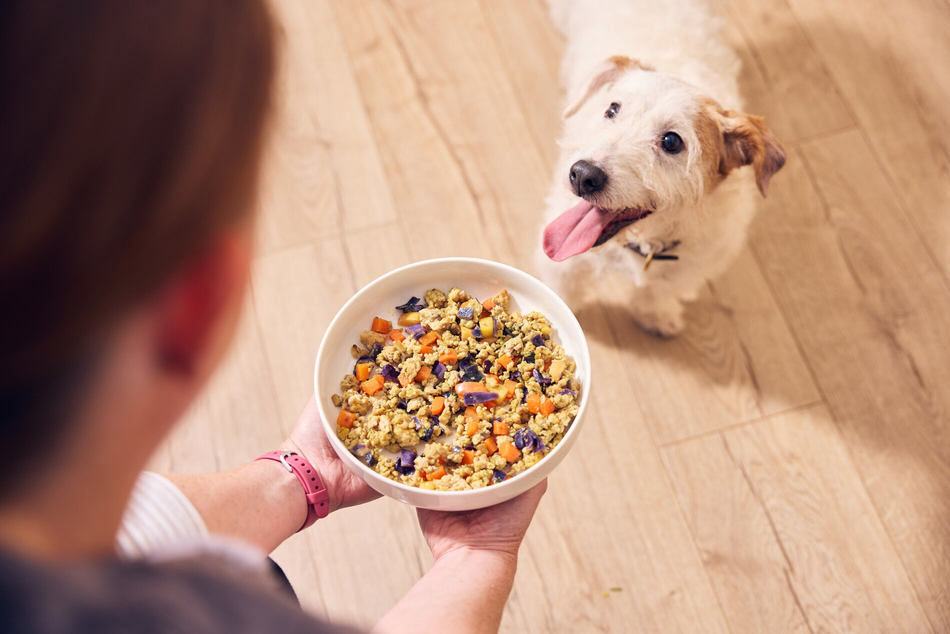
How to introduce my fussy dog to a new diet:
We’ve helped thousands of former fussy pups rediscover their love of mealtimes again, so we asked Diane, our in-house behaviourist for advice on feeding pups who are known to be a little pernickety.
“When transitioning to a new food, give your dog time to investigate, smell and taste the new food. It may be a different texture or flavour. Don't worry if they don't eat it straight away; offer it at their next mealtime or warm the food to release inviting smells."
Here are a few of our top tips for encouraging fussy pups to enjoy their meals:
- Warming the food a little will release a whole new world of delicious aromas. Heat only one meal worth in a microwavable bowl for 10 seconds at a time, stirring between each heat, until you are satisfied with the temperature. Make sure you do not put any food back into the fridge once it has been heated.
- Stick to regular mealtimes and avoid feeding them titbits or treats throughout the day.
- Adding Bone Broth to your dog’s food can tempt fussy pups. Choose from succulent lamb and delicious venison and pour on hot or cold to soften the food and make it more palatable, especially for smaller or older dogs.
- Try feeding your dog in a different bowl or at a different height – some dogs, especially larger dogs, don’t like bending down to the floor to eat their food, so using a bowl stool or popping it on top of the Different Dog Whine & Dine box can help.
We understand how hard it is when your dog isn’t much of a “foodie”, but consistency and perseverance are key. It can take a few boxes for your dog to truly settle on their new diet. Diane is very experienced with fussy pups and is on hand to help owners who have “tried everything” and might be feeling a little frustrated. Email us at feedme@differentdog.com to set up a consultation with Diane.
When should I expect to see healthy changes in my dog
It’s important to remember that every dog is different, and the timeline and benefits themselves differ from dog to dog. However, some of our customers report benefits such as better digestion and healthier, less frequent poops as soon as a couple of weeks into our food. Over time you may notice other benefits such as:
- Better overall health and less need for visits to the vet
- Less smelly gas
- Healthier, itch-free skin
- A shinier coat
- Increased energy levels
- More excitement around mealtimes
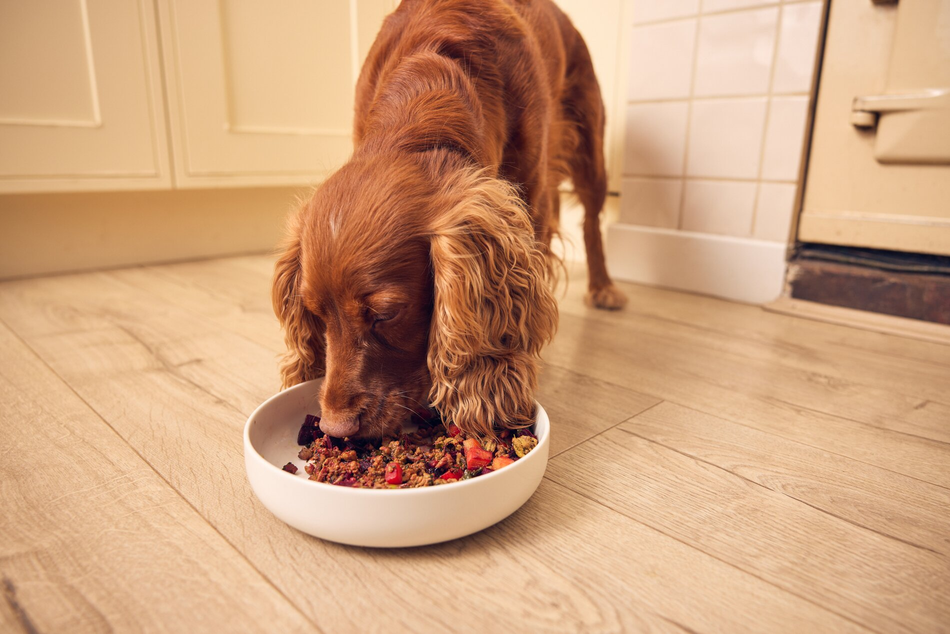
Your transition FAQs answered
My dog is drinking less water since switching to your freshly cooked recipes; is this normal?
Some dogs will drink much less water on our recipes, especially if they are switching from a dry food or kibble. Our ingredients are naturally moisture-rich, therefore provide your dog with a lot of the water they need. You may notice that there is some liquid in your pot once your meal has defrosted; this is filled with nutrients which are naturally released during our cooking process and should be served along with your dog’s food.
I’m still not sure how much I should be feeding?
You can find your daily feeding guide by logging into your account on our website and visiting your dog’s profile, which you can find here: https://www.differentdog.com/account/dogs/
It’s important to remember that this is just a guide; you know your dog best and if you feel they are still hungry or eating too much then we can help you change the daily amount. Drop us an email at feedme@differentdog.com and one of our team will be in touch to help.
How do you store the food once it’s opened?
Our pots are nice and easy to open and close thanks to our handy lid; just place the lid back on to keep any leftovers fresh in the fridge.
Can I serve the food cold?
Our recipes arrive frozen to lock the freshness in, so should be stored in the freezer, then defrosted as needed. They can be served straight from the fridge or warmed in the microwave as per our instructions above, depending on your dog’s preference. Each tub will stay fresh in the fridge for up to five days once defrosted.
How do I dispose of your packaging?
As a certified B Corp, we take sustainability very seriously, which is why all of our packaging is either recyclable or compostable. Our recipe pots are compostable, and our cardboard sleeves are recyclable. The Whine & Dine box, the outer of our insulating wool liner and the outers of the ice packs are also recyclable, and you can compost the wool from our insulation.
Alternatively, you can save up your wool liners and ice packs and once you've got enough to fill a Different Dog box, send us an email at feedme@differentdog.com, and we will send you a returns label to send them back to us to reuse or recycle.
For specific advice on transitioning your dog’s diet, contact us at feedme@differentdog.com.
You may also be interested in
